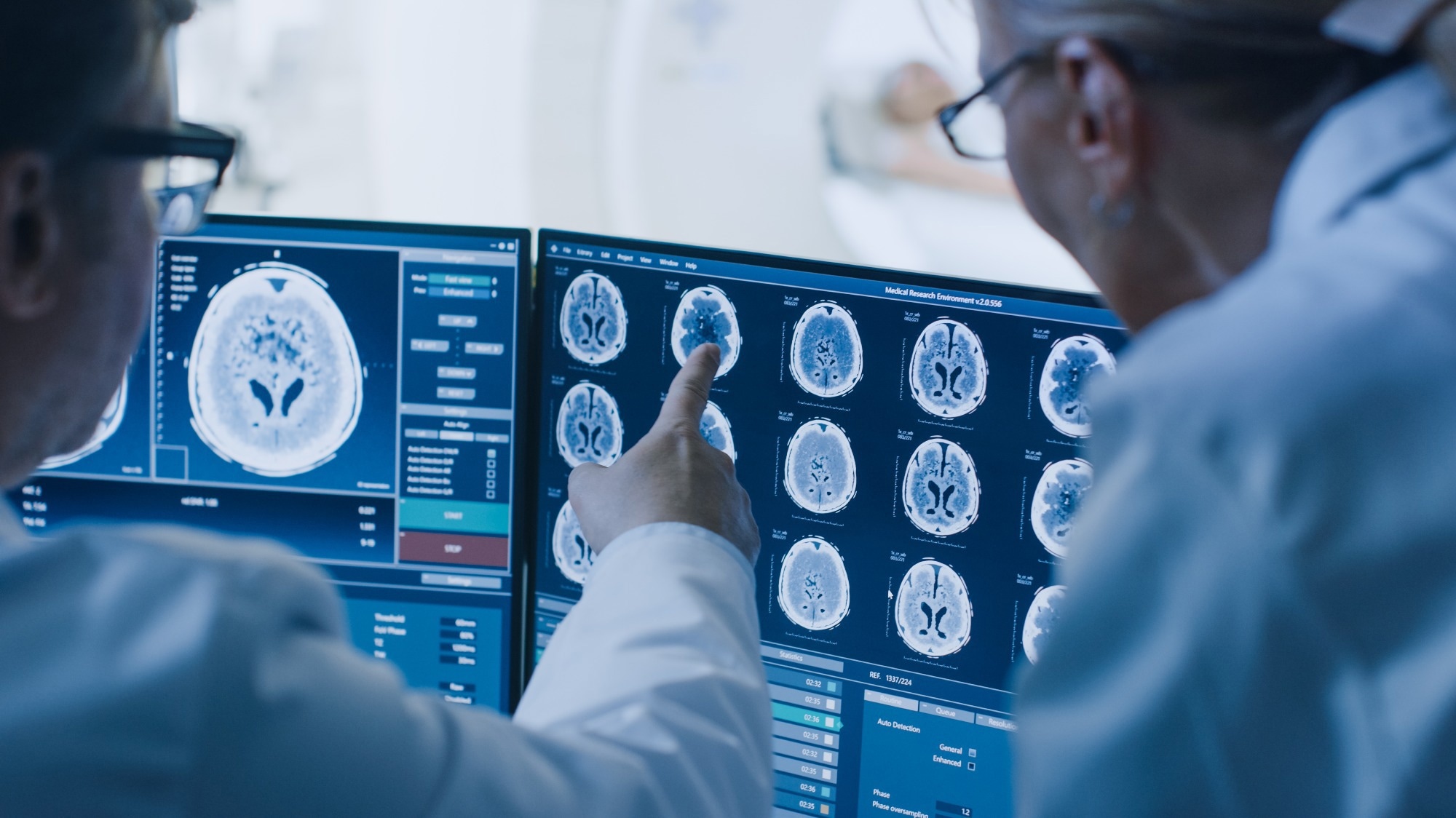Parkinson’s disease is a progressive neurodegenerative disease that exhibits a wide variety of cognitive and motor symptoms, indicating a similar heterogeneity in the neuroanatomical changes that underlie the disease.
In a recent study published in Communications Biology, researchers used a deep-learning-based contrastive approach to examine magnetic resonance imaging (MRI) scans from Parkinson’s disease patients and healthy controls to decipher the neuroanatomical changes specific to Parkinson's disease.
 Study: Contrastive machine learning reveals Parkinson’s disease specific features associated with disease severity and progression. Image Credit: Gorodenkoff/Shutterstock.com
Study: Contrastive machine learning reveals Parkinson’s disease specific features associated with disease severity and progression. Image Credit: Gorodenkoff/Shutterstock.com
Background
Parkinson's disease manifests in a wide range of symptoms, with cognitive and motor symptoms being the most common. The symptoms are often heterogeneous and associated with a high variability in the prognosis.
The high degree of variability in the cognitive, motor, and other symptoms of Parkinson's disease can be linked to similar heterogeneity in the neurological anatomy.
However, differentiating the inter-individual variations in neuroanatomy due to Parkinson’s disease from those caused by lifestyle, genetics, and other life factors has proven challenging.
Differences across studies in the data acquisition method also add to the inter-individual variations observed between different groups of Parkinson's disease patients.
About the Study
In the present study, the researchers used a deep-learning model called Contrastive Variational Autoencoders or CVAE to distinguish Parkinson’s disease-associated neuroanatomical changes from those associated with other factors such as genetics and lifestyle.
This model has previously been used to distinguish between the neuroanatomical variations in individuals with autism spectrum disorder and those also seen in controls.
Given CVAE’s ability to discern neuroanatomical features that are specific to diseases, the researchers believe that this deep-learning model would be suitable for analyzing the MRI scans of Parkinson’s disease patients and healthy controls to identify neuroanatomical features that were specific to the disease.
One of the underlying mechanisms that is thought to characterize Parkinson's disease is the accumulation of the cytoplasmic protein α-synuclein, leading to dopaminergic neuron loss in the basal ganglia.
Based on the loss of dopaminergic neurons in Parkinson's disease, dopamine transporter is a suitable biomarker to assess neuronal dysfunction and severity of the disease.
The accumulation of α-synuclein also impacts other brain regions apart from the basal ganglia, causing axonal dysfunction, which can be gauged based on the neurofilament light chain protein levels in the serum. However, while these biomarkers can support the diagnosis, the assessment of Parkinson's disease severity and treatment options depend on the analysis of MRI scans.
Here, the researchers used structural MRI data to differentiate between features unique to Parkinson's disease and those common between patients with Parkinson's disease and the controls.
They then validated the features identified by CVAE by linking them to deficits in dopamine transporter binding, various neurodegeneration biomarkers in serum, and clinical signs of disease severity and progression.
Cerebrospinal fluid samples collected from the participants were also used to measure the levels of proteins other than α-synuclein, such as amyloid-β, tau, and phosphorylated tau.
A proteomics analysis was also conducted using the cerebrospinal fluid samples to identify other proteins that could be involved in biological pathways that contribute to the neuroanatomical changes in Parkinson's disease.
Major Findings
The study showed that CVAE was able to identify various neuroanatomical features that were specific to Parkinson's disease and could to correlated with established biomarkers of neurodegeneration in Parkinson's disease, such as decreased dopamine transporter binding and serum levels of neurofilament light chain protein.
The neuroanatomical features identified by CVAE as being specific to Parkinson's disease also correlated with established severity and progression measures for the disease.
The most significant neuroanatomical changes were observed in the temporal and subcortical regions of the brain.
The wide-spread atrophy identified in these regions was also found to extend to the parietal and frontal lobes in the cerebral cortex. Additionally, enlargement in volume was observed in the white matter in areas such as the cerebellum, right centrum semiovale, and the periventricular regions.
A host of proteins were also identified in the cerebrospinal fluid that were correlated to the neuroanatomical features specific to Parkinson's disease.
The most prominent of these proteins were associated with the immune system, indicating the role of inflammatory pathways in the neurodegeneration observed in Parkinson's disease. These cerebrospinal fluid proteins also provided potential therapeutic targets to slow the progression of Parkinson's disease.
Conclusions
The study used the deep-learning model CVAE to analyze MRI imaging data and identify neuroanatomical features unique to Parkinson's disease.
The findings showed that the model was effective in identifying disease-specific neuroanatomical features that also correlated with established biomarkers of Parkinson's disease and the severity and progression of the disease.
The study further identified numerous cerebrospinal fluid proteins associated with the neuroanatomical abnormalities seen in Parkinson's disease, providing information on biological pathways involved in the neurodegeneration characteristic of Parkinson's disease and potential therapeutic targets.
Journal reference:
-
Zheng, L., Zhou, C., Mao, C., Xie, C., You, J., Cheng, W., Liu, C., Huang, P., Guan, X., Guo, T., Wu, J., Luo, Y., Xu, X., Zhang, B., Zhang, M., Wang, L., & Feng, J. (2024). Contrastive machine learning reveals Parkinson’s disease-specific features associated with disease severity and progression. Communications Biology, 7(1), 954. doi:10.1038/s4200302406648x. https://link.springer.com/article/10.1038/s42003-024-06648-x